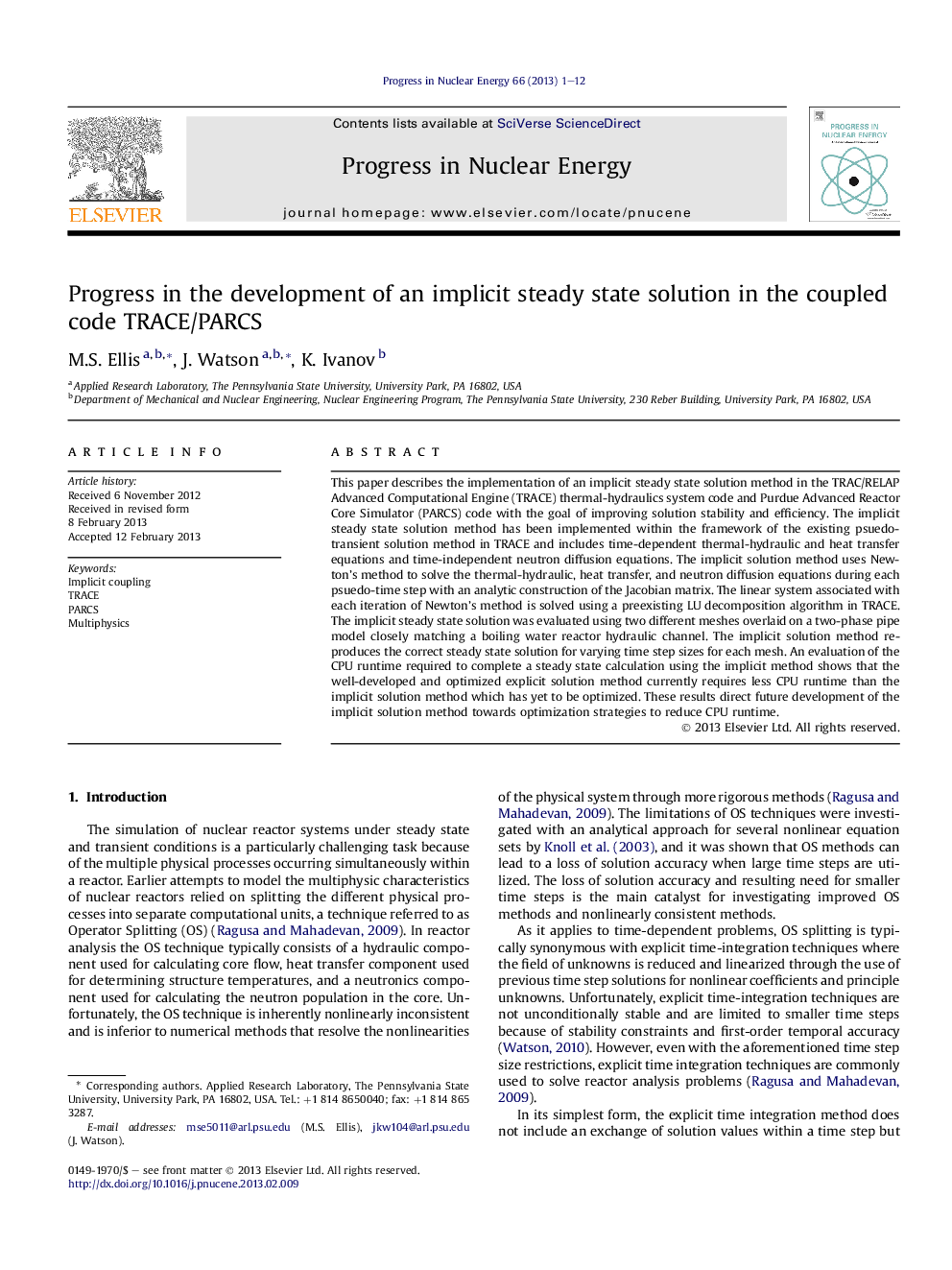| کد مقاله | کد نشریه | سال انتشار | مقاله انگلیسی | نسخه تمام متن |
|---|---|---|---|---|
| 1740840 | 1521772 | 2013 | 12 صفحه PDF | دانلود رایگان |

• An implicit steady state solution has been implemented in TRACE and PARCS.
• The implicit solution was tested using a 3-node and 14-node pipe model in TRACE.
• The implicit solution calculates the correct steady state solution.
• Results direct future work at optimizing the implicit solution to reduce runtime.
This paper describes the implementation of an implicit steady state solution method in the TRAC/RELAP Advanced Computational Engine (TRACE) thermal-hydraulics system code and Purdue Advanced Reactor Core Simulator (PARCS) code with the goal of improving solution stability and efficiency. The implicit steady state solution method has been implemented within the framework of the existing psuedo-transient solution method in TRACE and includes time-dependent thermal-hydraulic and heat transfer equations and time-independent neutron diffusion equations. The implicit solution method uses Newton's method to solve the thermal-hydraulic, heat transfer, and neutron diffusion equations during each psuedo-time step with an analytic construction of the Jacobian matrix. The linear system associated with each iteration of Newton's method is solved using a preexisting LU decomposition algorithm in TRACE. The implicit steady state solution was evaluated using two different meshes overlaid on a two-phase pipe model closely matching a boiling water reactor hydraulic channel. The implicit solution method reproduces the correct steady state solution for varying time step sizes for each mesh. An evaluation of the CPU runtime required to complete a steady state calculation using the implicit method shows that the well-developed and optimized explicit solution method currently requires less CPU runtime than the implicit solution method which has yet to be optimized. These results direct future development of the implicit solution method towards optimization strategies to reduce CPU runtime.
Journal: Progress in Nuclear Energy - Volume 66, July 2013, Pages 1–12